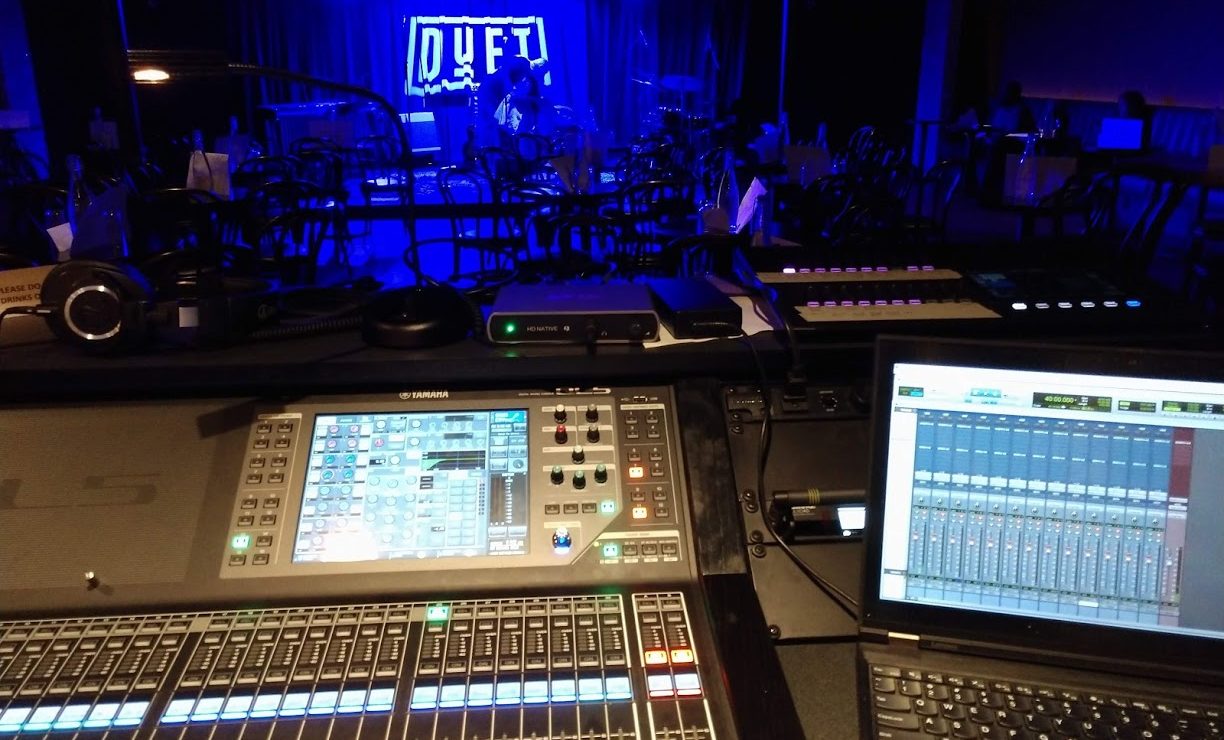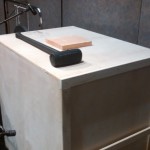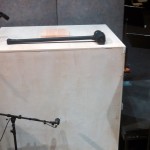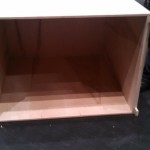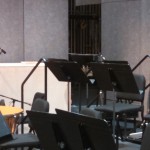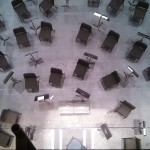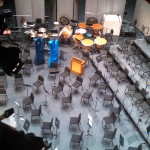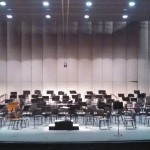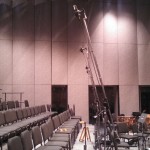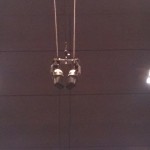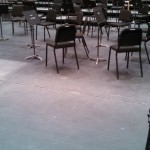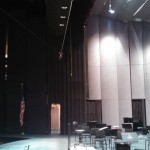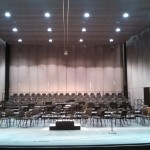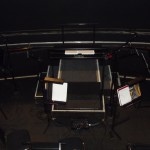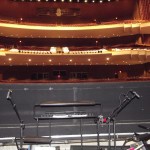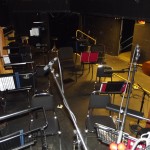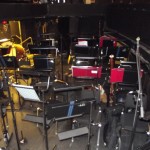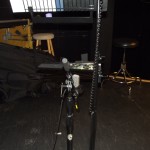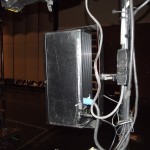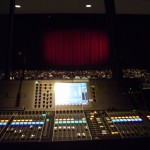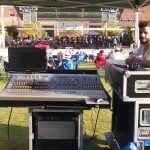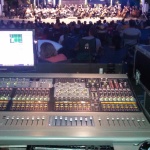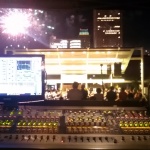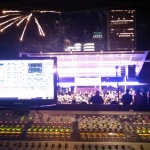Just like 2014, 2015 started right away with a medium-ish musical theatre production. The Tulsa Youth Opera staged a production of The Giver, composed by Susan Kandar and based on the book of the same name by Lois Lowry. This production was sponsored by the Tulsa Opera and comprised mostly of children and young teens with a couple of supporting rolls by some adult members of the Tulsa Opera studio artists.
This production took place in the Williams Theatre at the Tulsa Performing Arts Center; mixed on a Yamaha PM5D-RH, with a Meyer M1D line array, M1D-Sub cardioid subwoofer array, and supported by Sennheiser 2000 series wireless mics with Countryman B3 lavalier elements.
Unlike the Tulsa Opera, which performs in Chapman Music Hall, the Tulsa Youth Opera is approached more as a musical theatre production. The kids in the opera are not professional opera singers, and often times it’s their first time in a large production. So we mic them like we would actors in music theatre. Sennheiser 2000 series wireless belt packs with Countryman B3 lavalier elements are the tool for the job. Some of the cast get halo rigs built from elastic cord, some get over-the-ear rigs built with wire ear pieces and Hellerman sleeves. The cast was about 30 kids and a few young adults. The 10 principals all received wireless mics and Jonas, the lead was double miced with a primary and back up mic (I never had to use the back up during the show). We also prepped two spare wireless mic packs but did not have to use them.
It’s worth noting at this point, that the same week that we had the Tulsa Youth Opera rehearsing and performing in the Williams Theatre; upstairs in the Chapman Music Hall, the touring production of Once was performing. Once carries over 70 channels of wireless mics, in-ear-monitors, and wireless coms and production radios. And while our measly 13 channels of wireless mics pales in comparison, it could have been disastrous for both productions if proper frequency coordination was not done ahead of time. The Chapman Music Hall sits right above (literally on top of) the Williams Theatre. If two wireless mics are on the same frequency or even frequencies that are too close to each other, then one show or another may hear pops, clicks, whistling or even full audio from the other show. Luckily, we were able to coordinate frequencies ahead of time, and neither show had any interference from the other show. Both were nice and quiet the entire week.
The orchestra was 10 players: two violins, a cello, flute, clarinet, trombone, harp, two percussion players and a piano. Five Crown PCC160s were used along the front of the stage next to the pit edge for chorus mics. There were no other hanging or areas mics, and no mics hung from FOH as room mics (which I would later regret not doing when I started mixing the recording).
This show was mixed line by line using the DCA groups on the Yamaha PM5D and the automation system to move the principal singer mics in and out of DCA groups on a scene-by-scene basis. DCA 1 was dedicated to Jonas and his back up mic. DCA 6 was dedicated to the PCC mics, DCA 7 to the orchestra, and DCA 8 to the stage foldback monitors. DCAs 2 through 5 would have different actors assigned to them based on who was singing or speaking in a particular scene. I had to follow the score for the show for my mic cues.
The PM5D input list was:
- Jonas primary
- Jonas backup
- Giver
- Father
- Mother
- Lilly
- Fiona
- Asher
- Elder
- Instructor
- chorus soloist
- Violins – Neumann KM 184
- Cello – Audio Technica AT 4050
- Harp – AKG C414
- Flute – Neumann KM184
- Clarinet – Neumann KM 184
- Trombone – Sennheiser MD 421
- Piano High – AKG C414
- Piano Low – AKG C414
- Timpani – AKG C414
- Percussion 1 – Shure SM81
- SM announce mic
- tech table talk back mic
- wireless handheld
- PCC1
- PCC2
- PCC3
- PCC4
- PCC5
Recording was done straight into Protools 11 on my 4 year old Sony VAIO laptop. I had 28 channels coming from the PM5D which had two MY16-AUD Dante cards installed to allow for up to 32 channels of audio. I had 28 channels of audio, all wireless mics, the orchestra, and PCC mics plus two channels mirrored off the main stereo FOH mix. Because I was recording direct out of the mic preamps, the recorded audio also includes all the off stage niose and talking from the wireless mics, which you don’t hear during the performance because those mics are muted at those times. It will take some time to edit and mix those channels to get rid of all that extraneous noise. Luckily I don’t have a tight deadline for this one.
-
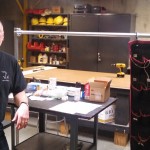
-
The Giver – Youth Opera
-
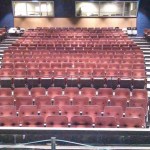
-
The Giver – Youth Opera
-
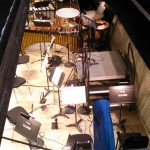
-
The Giver – Youth Opera
-
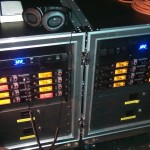
-
The Giver – Youth Opera
-
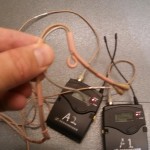
-
The Giver – Youth Opera
-
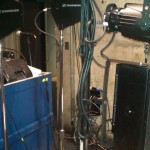
-
The Giver – Youth Opera
-
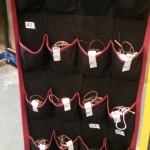
-
The Giver – Youth Opera
-
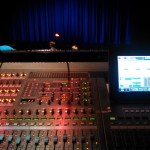
-
The Giver – Youth Opera
-
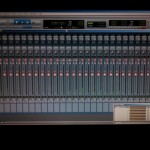
-
The Giver – Youth Opera
